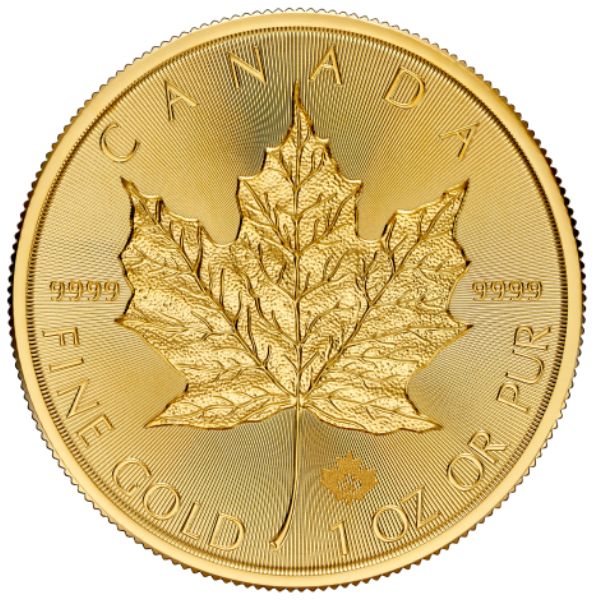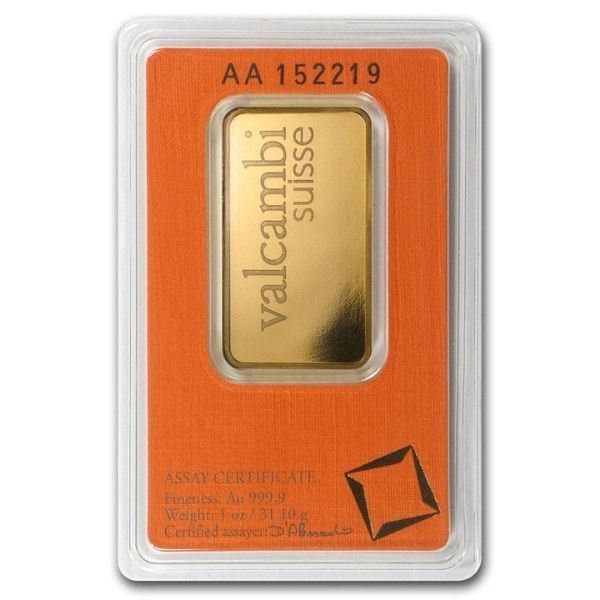10 Terms Every Gold Investor Should Know

Investing in gold bullion can be a great way to diversify your portfolio and prepare for the future. The problem? Buying gold often means researching hundreds of confusing terms. Gold companies use terms like spot price, troy ounces, and premiums to describe the details of their in-stock gold coins and bars.
If you want to start investing in affordable gold products, you’ll need to learn more about the key terms used by gold dealers and buyers.
In today’s Bullion Academy guide, we’re walking readers through 10 terms every gold investor should know. We’ll teach you all about what terms are used to describe a gold product’s price, condition, and more.
Learning the Lingo: Key Gold Investment Terms Explained
Learning the lingo behind trading gold might seem like a chore. However, your research will pay dividends in the long run. Developing a better understanding of the core terms used in the gold industry could save you thousands of dollars.
Benefits of Researching Gold Terms
Let’s take a look at how learning terms every gold investor needs to know can help you save money and level-up your gold stacking game.
Save Money
Researching key lingo and terminology in the gold market can save you quite a bit of cash. Some investors start buying gold before they even understand what terms like “spot price” and “premiums” mean. An unprepared investor is sure to lose money by overpaying for their gold coins and bars.
Understand Gold News and Price Changes
As you build your investment portfolio, keeping up-to-date on the news is extremely important. The gold market is no exception. You wouldn’t buy stocks in Tesla without learning what the company’s fundamentals look like, so why would gold bullion be any different?
To really understand the newest gold news updates, you should have a good grasp of the terms writers use to refer to gold. Take an article on gold scarcity, for example. A writer behind this article would likely talk about “rising premiums” for core market-movers like the American Gold Eagle.
How could you make sense of this breaking news story without understanding what a “premium” is? The short answer: you can’t. Before you invest in gold, take some time to familiarize yourself with the key words and phrases used in the industry.
Top 10 Terms Every Gold Investor Should Know
To help readers better prepare themselves for the rewarding journey of investing in gold, we’ve prepared a list of the top 10 most important terms every gold investor should know. Ten terms every gold investor should know include:
- Spot Price
- Troy Ounces
- Premiums
- Purity or Fineness
- Condition or Grade
- Gold Assay
- Liquidity
- Divisibility
- Brilliant Uncirculated (BU); and
- Karats
Spot Price
Spot price is perhaps the most important term every new gold investor needs to know. Gold’s value is quoted using a figure called “spot price.” When gold’s spot price goes up, that means that the precious metal is more valuable.
Likewise, a diminishing spot price suggests that either gold’s supply has increased or demand has decreased. In either case, gold becomes cheaper to buy – and less valuable to sell.
Gold investors should carefully track the spot price of gold. When gold dips in price, it may be a good time to buy. Seasoned investors call this strategy “buying the dip.” And when gold becomes more expensive, it’s a great opportunity to sell – and realize some profit!
What you need to know: spot price refers to gold’s current market value per troy ounce.
Troy Ounce
The spot price of gold is often quoted in troy ounces, which means we have another key term to explain to new gold investors. A troy ounce is a specialized measuring system used to weigh gold bullion coins and bars. How much does a troy ounce weigh in ounces? Each troy ounce weighs around 1.09714 troy ounces.
Understanding the key term “troy ounces” is important for a couple of reasons.
First, knowing how much a troy ounce is helps you keep track of gold’s price movements.
Second, you can actually use your new understanding of troy ounces to make more informed investment decisions. The total cost of a gold product is calculated by adding any applicable premiums to the product’s melt value. To find a product’s melt value, you’ll need to convert its weight into troy ounces.

What you need to know: troy ounces are the standard measurement unit for precious metals. Gold’s value is quoted in troy ounces.
Premiums
Premiums are an additional fee you pay on top of a gold product’s melt value in gold bullion.
Like we mentioned above, premiums are one of the components used to determine the total value of a gold product on the secondary market. On top of a product’s melt value in gold bullion, you’ll also need to pay a small (or rather large) additional fee called a premium.
Understanding precious metal premiums can help you save money. Once you know a product’s melt value, you can compare prices across multiple dealers by contrasting their premium charges.
What you need to know: premiums are a small, variable fee tacked onto the total cost of a gold coin or bar.
Purity or Fineness
Not all gold coins and bars are minted with the same amount of pure gold. Coins like the American Gold Eagle are struck with .9167 fine gold bullion, while other coins like British Gold Britannias feature a higher purity of .9999.
Fineness and purity are terms used to describe how pure a gold product actually is. This figure is usually quoted using a decimal system. For example, a coin that is 99.99% pure will include the inscription “.9999” on its obverse or reverse.
Purity is an important part of buying gold coins. The purer your coin, the more gold it actually contains per troy ounce. Make sure to note the purity of a gold coin or bar before paying for it.
What you need to know: often quoted in decimal figures, gold purity and fineness are terms used to describe what percentage of a coin or bar is made of actual gold.
Condition or Grade
Purity isn’t the only factor that influences the value of a pure gold coin. Coins are sold in various different conditions. Also called “grade,” a coin’s condition refers to how weathered or worn down a coin is. Coins that have been circulated might have scratches, lose their luster, or bear other signs of having changed hands over a long period of time.
When you buy gold coins and bars, you’ll want to pay careful attention to each product’s condition. Some investors prefer to buy only Brilliant Uncirculated (BU) coins and bars, while others like the look of a weathered, circulated coin.
What you need to know: a gold product’s grade (or condition) tells investors how ‘perfect’ the coin is. A coin’s grade can help give buyers a better idea of its actual state, imperfections, and potential value.
Gold Assay
How do you know for sure how pure a gold coin or bar is? The answer involves our next big key gold investing term: gold assay. A gold assay is a chemical process that helps verify the fineness of a gold bar or coin.
Oftentimes, gold products will come in their “assay cards,” which provide relevant information about the proven purity of the coin or bar.
Assay cards aren’t always provided for precious metal products. Generally, you can trust that authentic gold bars and coins from reputable mints are verified for their purity or fineness.
What you need to know: gold assay is a process of verifying the purity of a gold coin or bar. Assay cards can provide you with additional proof of your investment’s fineness.
Liquidity
Liquidity isn’t just a term in the gold world. In fact, analysts use liquidity to describe all sorts of different investments. For gold investors, liquidity refers to how easy it will be for you to quickly buy and sell a gold coin or bar.
For the most part, popular gold bars and coins are highly liquid. You’ll never have much trouble finding someone willing to buy your American Gold Eagle or Royal Canadian Mint Gold Bar.
If you’re investing on a budget, the most liquid gold products tend to be fractional pieces. Fractional gold refers to any gold product that weighs less than a full troy ounce. These products are easy to quickly sell without forcing you to part with thousands of dollars in gold at one time.

What you need to know: liquidity helps gold investors determine how easily they’ll be able to sell a given product in the future. Popular gold products are generally highly liquid, which is good for people who want to sell their gold without hassle in the future.
Divisibility
Divisibility plays a huge role in the liquidity of a gold portfolio. In short, divisibility refers to your ability to divide your gold products into smaller, more manageable units. Take gold bars as an example. If you have a collection composed of a single 1 Kilo Gold Bar, you’d have to sell 32 ounces of gold at once if you want to cash out – that’s a mouthwatering $66,000 or more worth of gold!
But if you instead stack more divisible units like 1 Ounce Gold Bars, you’d be able to sell part of your stack without parting with such a large amount of gold at once.
What you need to know: divisibility refers to how easily you can ‘split’ your gold up. High divisibility means it’ll be easier for you to sell small, manageable pieces of gold in the future.
Brilliant Uncirculated (BU)
Most gold bullion coins are traded in BU condition. BU means Brilliant Uncirculated. As one of the best conditions a graded coin can receive, BU coins feature no imperfections and bear no sign of circulation.
In other words, a BU coin comes straight from its mint and has never actually made it into circulation. These coins are completely perfect and represent the exact vision of the renowned mint that produced them.
Coins are traded in a variety of conditions. Some of our investors love to stack “AMAC” (Any Mint, Any Condition) gold coins and bars. These products are often cheaper than BU gold items, so they’re an easy way to stack on a budget.

What you need to know: Brilliant Uncirculated (BU) Coins have never been circulated and represent the best condition that can be given to a gold coin or bar. BU products are often easier to sell, as they include no scratches, imperfections, or signs of wear.
Karats
Karats are units of measurement used to describe the purity of gold products – mostly jewelry. 24k gold is 24/24 parts gold, which means they’re basically 100% pure. 18k gold is 75% pure, as it contains 18/24 parts actual gold.
The karat measurement system isn’t usually used to describe gold coins and bars. Generally, this unit is only employed when we’re talking about gold bracelets, necklaces, and other pieces of jewelry.
Still, investors need to understand karats as a term. If you plan to buy gold jewelry for a loved one or as an investment, you should know how much actual gold your ring or necklace includes.
What you need to know: karats help investors know how much gold their jewelry contains. Each karat represents one part gold out of 24, meaning that 24k gold is functionally 100% pure.
Final Thoughts: Terms Every Gold Investor Needs to Know Before Buying Gold
Before you start searching for your next gold investment, there are quite a few terms you need to learn.
Learning the key terms every gold investor needs to know before buying gold isn’t just a matter of knowledge. These phrases dominate the gold industry, and knowing what they mean can save you thousands of dollars as you build your gold bullion portfolio.
You might also be interested in:
About The Author
Michael Roets
Michael Roets is a writer and journalist for Hero Bullion. His work explores precious metals news, guides, and commentary.
